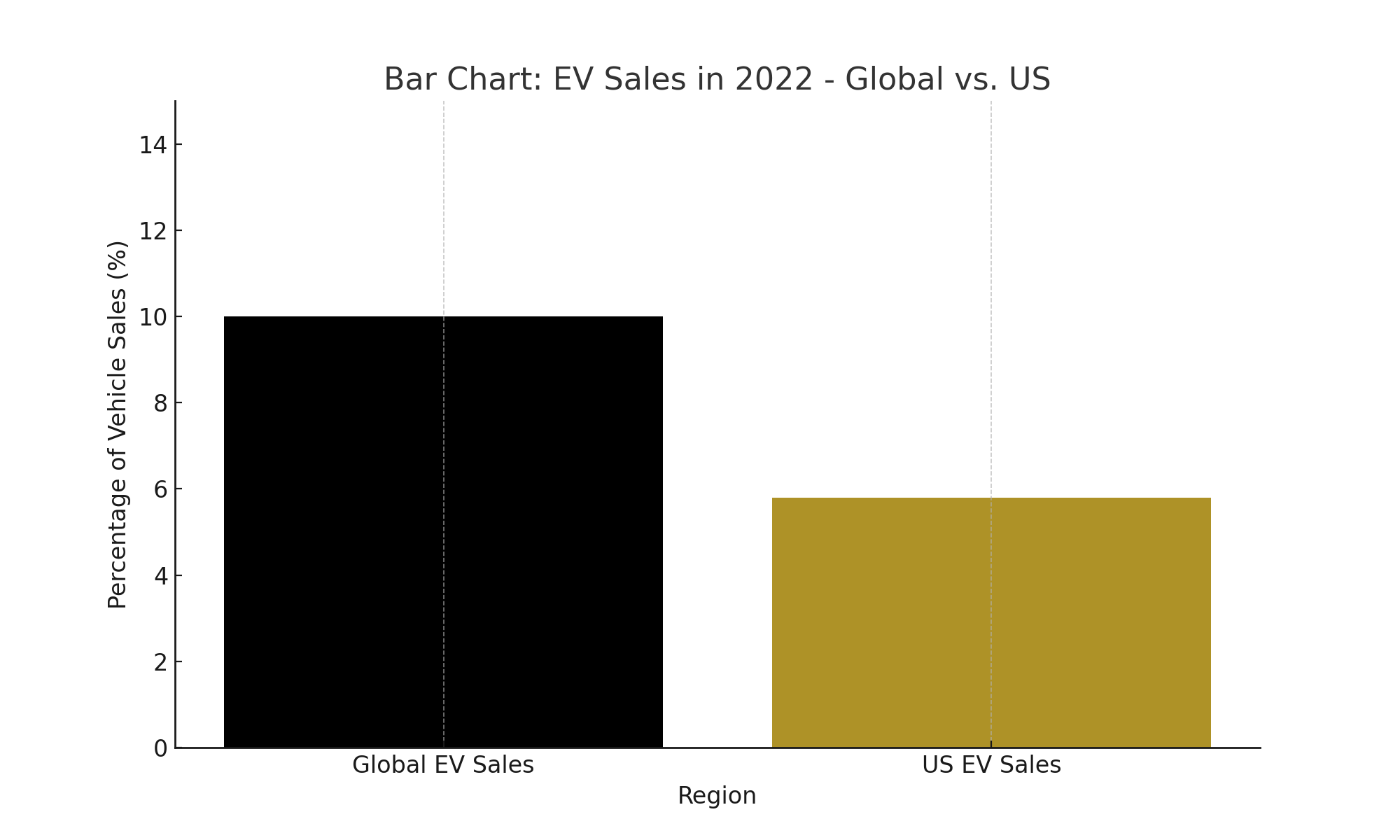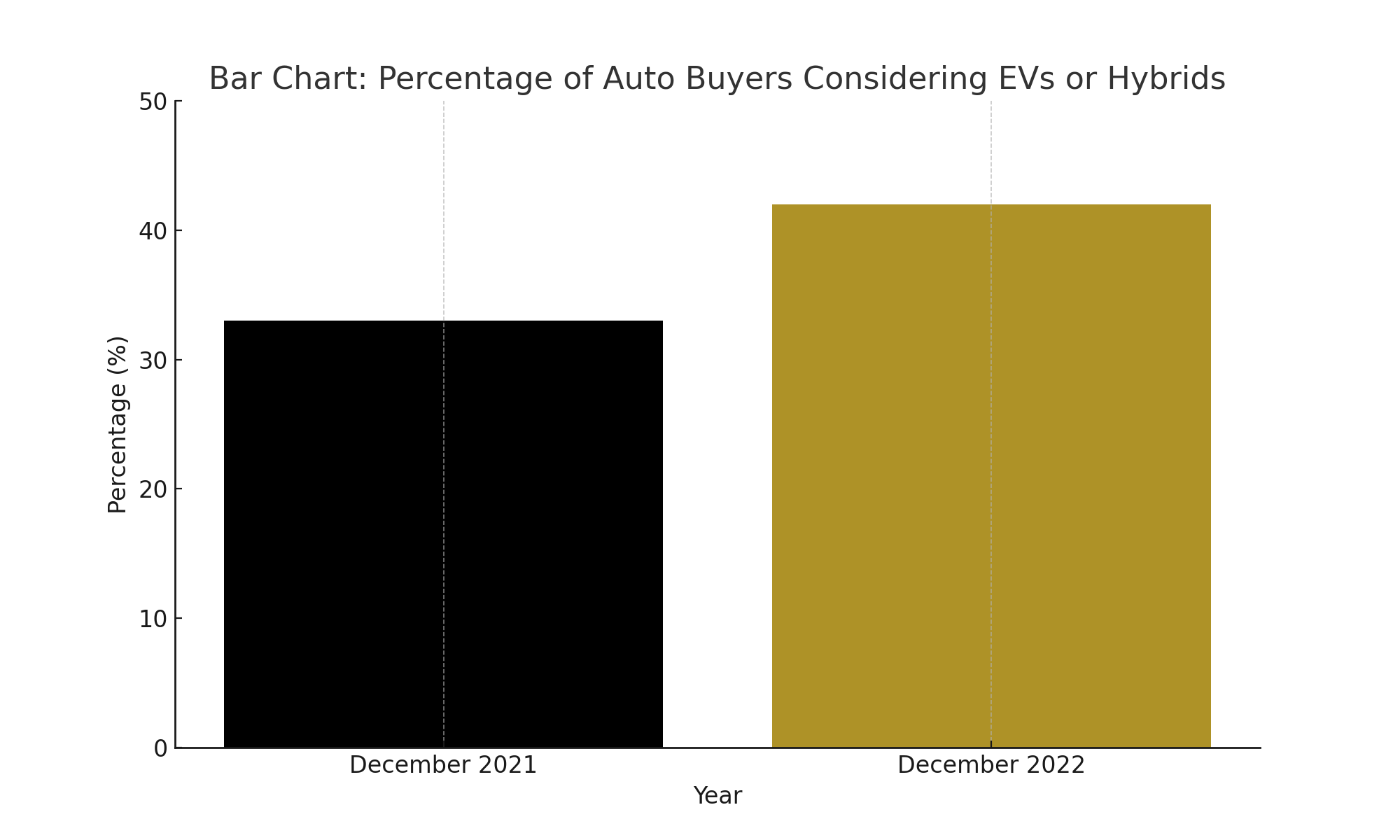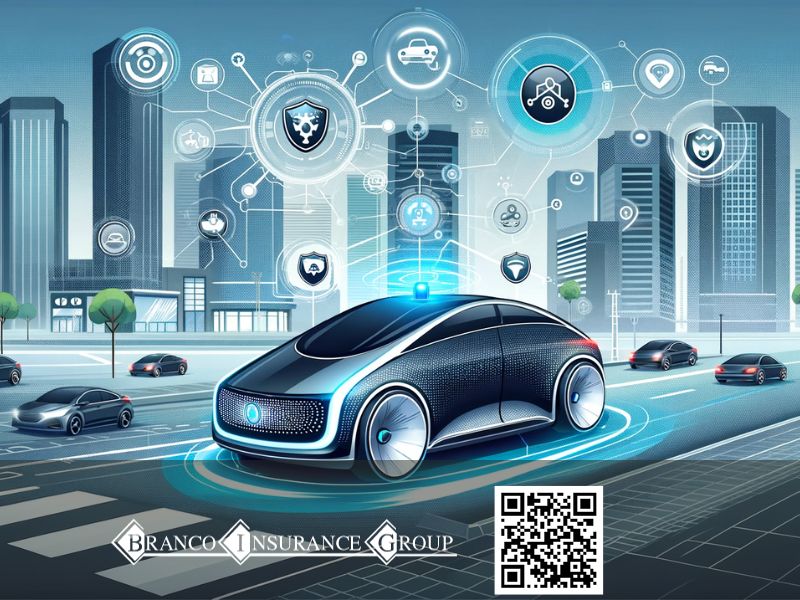The world of transportation is on the cusp of a revolutionary transformation with the rise of autonomous vehicle technology. Also known as self-driving or driverless cars, autonomous vehicles have the potential to fundamentally disrupt the auto insurance industry in the coming years and decades.
As autonomous driving features become increasingly commonplace in new car models from major manufacturers like General Motors, Tesla, Toyota, Honda, and Mercedes-Benz, insurers are scrambling to adapt to this new landscape and respond to emerging challenges and opportunities.
This article will provide an overview of autonomous vehicle technology levels, explore key issues like shifting liability frameworks and evolving consumer perceptions, and outline predictions for how auto insurance providers can reshape their businesses to thrive in the autonomous age.
Key Takeaways for Insurance Providers of Autonomous Vehicles
The vehicle landscape 10 to 15 years down the road will only contain a minority of today’s human-maneuvered cars. Various gradations of autonomously-capable vehicles dominate roads instead.
Aligning today for this oncoming market transformation stands critical for legacy auto insurers seeking continued relevance. Key focus areas to proactively confront include:
- Adapting liability underwriting frameworks more weighted toward product defects versus driver behavior
- Utilizing vehicle telemetry to enable usage-based personalized policies reflective of tech capabilities
- Ramping analytical capabilities to accurately price autonomous vehicle risk factors
- Providing differentiated coverage options appealing specifically to autonomous vehicle operator concerns
- Enhancing claims management through swift access to data-rich incident evidence
- Developing trusted branding around autonomous safety while championing ethical protocols
- Diversifying offerings into related domains like cybersecurity and specialized fleets
- Embedding insurance directly into emerging autonomous vehicle commercialization ecosystems
The auto insurance terrain in the era of autonomous vehicles will no doubt depart substantially from the previous driver-focused era.
However, by intelligently assessing constantly evolving landscapes and responding with strategic foresight, innovative products, and adaptive operations, insurers position themselves to continue delivering value amidst the vehicle autonomy revolution.

What are Autonomous Vehicles and How Do They Work?
Autonomous vehicles, sometimes called self-driving cars or driverless cars, are vehicles equipped with advanced sensor technology, control systems, and artificial intelligence that enable them to perform critical driving functions like steering, acceleration, and braking with little to no human input.
There are different levels of vehicle automation and autonomy as defined by SAE International, an organization that sets standards across the auto industry:
- Level 0 – No Automation: The driver performs all driving tasks like steering, braking, and accelerating. Many cars today would fall into this baseline category.
- Level 1 – Driver Assistance: Basic functions like cruise control and automated emergency braking help assist the driver, who must still constantly supervise vehicle operation.
- Level 2 – Partial Automation: The car can control steering, acceleration, and braking in specific situations, but the driver must remain alert and ready to take over immediately if needed. Features like Tesla‘s Autopilot fall into this category.
- Level 3 – Conditional Automation: The vehicle handles most of driving itself under certain conditions, but the human still needs to be ready to intervene if the system requests. Mercedes-Benz‘s Drive Pilot system is a newly approved Level 3 system only available currently in Nevada.
- Level 4 – High Automation: The first level where vehicles can fully drive themselves without any human interaction under select conditions and locations. For example, Waymo and GM Cruise operate Level 4 robotaxi fleets today in certain metro areas.
- Level 5 – Full Automation: The pinnacle where vehicles operate autonomously at all times with no need for human drivers. This is the ultimate goal of autonomy proponents, but still likely at least a decade away from being commercially viable at scale.
The key components that enable this autonomous functionality include:
- Sensors: Cameras, radar, LiDAR, and ultrasonic sensors detect the vehicle’s surroundings in 360 degrees out to over 300 yards in some cases. They identify objects, lane markings, signs, other vehicles, pedestrians, and more.
- Control Systems: Onboard computers then analyze this streaming sensor data to generate a detailed real-time depiction of the external environment. Sophisticated artificial intelligence algorithms then determine the optimal path forward and control commands.
- Connectivity: Many systems also connect to wireless networks to receive additional data from surrounding infrastructure like traffic signals and to access high-definition maps that assist real-time localization and navigation. Some also enable vehicle-to-vehicle (V2V) data sharing.
- Redundancies: Safe fallback layers like backup power supplies, computing systems, manual controls, and remote human operators ensure vehicles can navigate potential system failures safely.
As this technology continues advancing rapidly, autonomous driving capabilities are beginning to have a profound impact across society. But when it comes to auto insurance specifically, the rise of autonomy creates seismic challenges and opportunities.
The Liability Shift from Drivers to Manufacturers
Perhaps the most potentially disruptive insurance impact involves the question of who is liable in the event of a crash or accident involving an autonomous vehicle.
With Level 0 to Level 2 human-driven vehicles, drivers carry primary liability through their legally mandated auto insurance policy. But as control shifts from humans to autonomous vehicle systems at Levels 3 through 5, so too could responsibility in case of incidents.
Manufacturers like Tesla and technology developers like Waymo, along with component suppliers like sensor and computer chip makers, could face increased litigation risk and payouts to victims of self-driving car crashes. Complex questions around determining the root causes of system failures further legal uncertainty.
This liability shift threatens to significantly alter auto insurance frameworks built over decades to revolve around driver behavior. As robotaxis and other autonomous fleets gain traction in coming years, insurers must adapt underwriting approaches more toward cyber and product liability coverage suitable for such emerging technology exposure.
Lower Accident Volumes but Increased Severity
Industry boosters frequently tout the enhanced safety benefits of autonomous vehicles. With more than 90% of crashes caused by dangerous driver behaviors that autonomous systems avoid by design, self-driving vehicles promise drastically lower motor vehicle fatalities once broadly adopted.
The National Highway Traffic Safety Administration estimates advanced driver assistance systems could currently prevent over 100,000 crashes per year in the U.S. alone. More advanced autonomy could prevent nearly all of the over 35,000 annual US auto accident deaths.
This dramatic drop in accident frequency suggests massive potential cost reductions for insurers.
However, crashes that do occur may end up highly severe given autonomous vehicle complexity. Advanced sensors and computing components that get damaged often prove extremely expensive or impossible to repair with standard auto body shop capabilities.
As such, while claim volume dwindles in coming years, the average cost per claim could rise notably. Updated premium pricing models must account for this new dynamic appropriately.
Table 1: Factors Impacting Autonomous Vehicle Insurance Premiums
Factor | Impact on Premiums | Description |
Accident Frequency | Lower premiums | With >90% of crashes caused by human error that AVs avoid, a massive drop in claims expected |
Accident Severity | Higher premiums | Though rare, AV repair costs are high due to the complexity of the components |
Regulation & Legislation | Lower premiums initially | Clear federal & state oversight and product safety rules give insurers a framework for pricing risk |
Public Trust | Lower premiums | Greater mainstream AV adoption driven by consumer confidence leads to an expanded market and better loss models |
New Risk Exposures | Higher premiums | Cyber threats, connectivity issues, and infrastructure uncertainties emerge as major concerns needing coverage |
Fleet Ownership Models | Lower premiums | Insurance at scale for AV fleet companies enables usage-based pricing from huge data pools |
Adapting Insurance Underwriting for Mixed Fleets
During the transition toward fully autonomous mainstream use over the next 10+ years, insurers face difficulties underwriting policies and pricing premiums for intermixed autonomous, semi-autonomous, and human-driven cars.
Actuaries today utilize driving history-based rating factors around past tickets, accidents, and more. But such historical data holds little predictive value in determining risks for never-before-seen autonomous vehicle technology.
With societies containing both self-driving and human-driven cars, accidents also grow trickier to attribute root cause – was it driver error or a sensor glitch? Solving these fault attribution challenges requires extensive real-world driving data collection and analysis.
Some insurers like Avinew specialize specifically around bespoke Tesla and other emerging autonomous vehicle coverage. We will likely see a growing fragmentation of auto insurance offerings centered around autonomy-compatibility.

Importance of Vehicle Sensor Data Access
Modern vehicles constantly collect and transmit streams of data through onboard computers and sensors related to location, environment, driving performance, component health, accidents, and more.
Accessing this data proves invaluable for insurance providers in accurately underwriting policies and investigating claims. However, many automakers carefully guard this telemetry given factors like privacy, competitive concerns, legal liability, and proprietary value.
Navigating these data access constraints while also upholding expanding regulations around consumer data rights presents a key challenge. Synthesizing various data streams into insights additionally requires insurance providers to significantly upgrade analytics capabilities.
Some insurers emphasize steering clear of directly harnessing autonomous vehicle data to avoid liability. The Travelers Companies highlights in a research paper how auto and tech manufacturers seem better positioned to manage risks coming from connectivity and autonomy.
We will likely see a rise in insurance products centered purely around ancillary risks like cyber data breaches while avoiding taking on autonomy system failure liability.
Table 2: Autonomous Vehicle Adoption Scenarios 2025-2040
Year | Conservative Scenario | Moderate Scenario | Optimistic Scenario |
2025 | 5% New Sales | 20% New Sales | 40% New Sales |
2030 | 10% New Sales | 50% New Sales | 90% New Sales |
2035 | 40% Fleet Adoption | 60% Fleet Adoption | 80% Fleet Adoption |
2040 | 60% Premium Decline | 75% Premium Decline | 90% Premium Decline |
Building Trust Through Safety
Surveys consistently demonstrate a prevalent public skepticism surrounding autonomous vehicle technology adoption and safety.
AAA polls find over 67% of US drivers today report feeling afraid to ride in a fully self-driving vehicle. Earning consumer confidence constitutes a pivotal hurdle to mainstream autonomous vehicle rollout.
Insurers through rate setting wield influence cultivating trust in automation capabilities. Competitive pricing signals autonomous technology reliability and safety. Partnerships with automakers and tech providers also help disseminate public education addressing concerns.
Additionally, policy offerings explicitly covering autonomous vehicle training, regular system check-ups, and remote monitoring may incentivize consumer adoption. Usage-based coverage through telematics could enable fairer, personalized rates reflective of actual driving habits.
Insurers can play a key role in ushering society toward embracing autonomous advancement following constructive, ethical principles for the betterment of roadway safety.
What Does the Future Hold for Autonomous Vehicle Insurance?
Opinions remain mixed on what exact insurance framework changes manifest as autonomous vehicles reach critical mass adoption down the road. However, several overarching themes and predictions command widespread industry agreement.
Most insurance experts dismissed the most extreme scenarios of autonomous vehicles completely eliminating the need for insurance. Instead, they foresee autonomous technology necessitating adaptation of existing auto insurance structures to appropriately transfer risks.
Many companies diversify into related fields like product liability or cyber risk coverage to shore up revenue streams.
Autonomous vehicles get deployed primarily through large managed fleets versus individual ownership. This provides scale economic advantages but concentrates risk exposure across the fleet. New insurance products tailored around these fleet management enterprises gain traction.
Additionally, embedded insurance offered directly by automakers and autonomy tech vendors has become more commonplace. Tesla already sells policies this way as an add-on available within their vehicle software ecosystem. Industry veterans like Dan Peate, CEO of automated car insurance firm Avinew, argue this embedded model disrupts the traditional insurer distribution value chain.
Lastly, gradually declining individually-owned vehicles plus dropping accident incidence from autonomous cars eat into the auto insurance market size. Yet new risks like product defects, software flaws, connectivity disruptions, data breaches, and infrastructure uncertainties countervail savings from reduced crashes.
Table 3: Key Insurance Provider Growth Focus Areas
Focus Area | Description |
New Product Development | Tailor AV-specific coverage addressing emerging autonomy risks |
Enhanced Data Analytics | Harness sensor & driving data to model risk, administer claims, personalize pricing |
Building Trust & Awareness | Champion AV safety, guide smooth consumer adoption through insurance partnerships |
Revamped Underwriting Models | Adapt practices adjusting liability frameworks centered around autonomy systems vs driver behavior |
Expanded Offerings | Diversify into complementary fields like cybersecurity and fleet management |
Embedded Ecosystem Integration | Provide direct insurance offerings within emerging AV development ecosystems |
Final Thoughts
We want to emphasize that the rise of autonomous vehicles will have significant implications for the insurance industry. While the exact changes are still uncertain, it’s clear auto insurers will need to adapt to serve this emerging market.
At Branco Insurance Group, we are closely monitoring developments in autonomous vehicle technology and proactively educating ourselves on the associated risks and coverage considerations. As a trusted local insurance provider serving Connecticut for over 10 years, we have the expertise and carrier relationships to help you navigate insurance needs amidst this vehicle transformation.
If you have any questions about insuring an autonomous-capable vehicle you own today or may be purchasing in the future, please don’t hesitate to contact us. We would be happy to discuss coverage options and make recommendations tailored to your specific situation. Our team stays on top of the latest ways to adequately protect vehicles with automated features.
Reach out to us anytime to explore how Branco Insurance Group can ease uncertainties through the professional, personalized insurance service you’ve come to rely on all these years. We look forward to helping you and your family continue enjoying peace of mind no matter what the future of driving holds.







